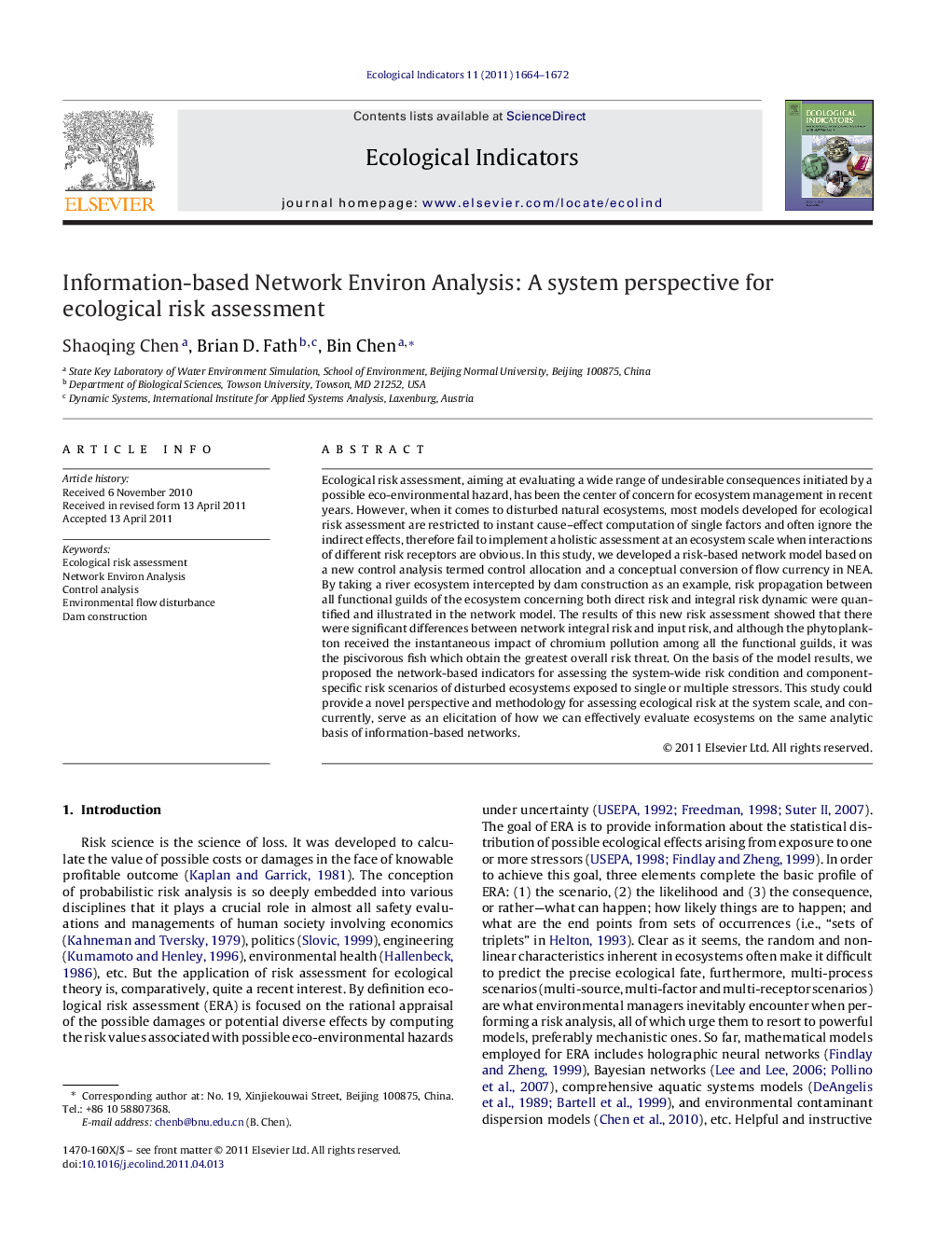| Article ID | Journal | Published Year | Pages | File Type |
|---|---|---|---|---|
| 4373982 | Ecological Indicators | 2011 | 9 Pages |
Ecological risk assessment, aiming at evaluating a wide range of undesirable consequences initiated by a possible eco-environmental hazard, has been the center of concern for ecosystem management in recent years. However, when it comes to disturbed natural ecosystems, most models developed for ecological risk assessment are restricted to instant cause–effect computation of single factors and often ignore the indirect effects, therefore fail to implement a holistic assessment at an ecosystem scale when interactions of different risk receptors are obvious. In this study, we developed a risk-based network model based on a new control analysis termed control allocation and a conceptual conversion of flow currency in NEA. By taking a river ecosystem intercepted by dam construction as an example, risk propagation between all functional guilds of the ecosystem concerning both direct risk and integral risk dynamic were quantified and illustrated in the network model. The results of this new risk assessment showed that there were significant differences between network integral risk and input risk, and although the phytoplankton received the instantaneous impact of chromium pollution among all the functional guilds, it was the piscivorous fish which obtain the greatest overall risk threat. On the basis of the model results, we proposed the network-based indicators for assessing the system-wide risk condition and component-specific risk scenarios of disturbed ecosystems exposed to single or multiple stressors. This study could provide a novel perspective and methodology for assessing ecological risk at the system scale, and concurrently, serve as an elicitation of how we can effectively evaluate ecosystems on the same analytic basis of information-based networks.
